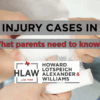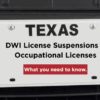
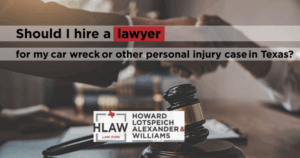
Considering hiring a lawyer after a car wreck or injury in Texas? Learn when legal representation is essential—and how it can impact your compensation.
Suffering an injury due to someone else’s negligence in Texas—whether from a devastating car accident on I-35, a serious workplace incident in a non-subscriber situation, or an unexpected slip and fall at a commercial property—can throw your life into turmoil. Beyond the physical pain and emotional distress, you’re likely facing mounting medical bills and lost income, all while trying to understand your rights. You may be entitled to significant compensation, but the path to securing it is often fraught with complexities. Insurance companies, whose primary goal is to protect their bottom line, are adept at minimizing payouts. This is where the expertise of a seasoned Texas personal injury attorney becomes not just beneficial, but essential.
Here’s a more in-depth look at why engaging a knowledgeable attorney can profoundly impact the outcome of your Texas personal injury claim:
1. Deep Expertise in Texas Laws and Intricate Procedures
Personal injury law isn’t uniform across the United States; Texas has its own specific statutes, rules, and precedents that govern these cases. An experienced attorney practicing personal injury law in Texas will possess a comprehensive understanding of:
- Statutes of Limitations: Texas law imposes strict deadlines for filing a personal injury lawsuit. For most cases, this is two years from the date of the injury (Texas Civil Practice & Remedies Code § 16.003). However, this can be nuanced. For instance:
- The Discovery Rule: In some situations where the injury is not immediately apparent (e.g., certain medical malpractice cases or exposure to hazardous substances), the statute of limitations may begin when the injury was discovered or reasonably should have been discovered.
- Minors or Incapacitated Individuals: The statute of limitations can be “tolled” (paused) for minors or individuals legally deemed mentally incompetent, potentially extending the time they have to file.
- Claims Against Government Entities: These often have much shorter notice requirements (e.g., 60-180 days to formally notify the governmental unit of the claim) before the two-year statute of limitations. Missing these initial notice deadlines can bar your claim. An attorney ensures these critical deadlines are met, protecting your right to seek compensation.
- Negligence and Liability Standards: To win a personal injury claim, you must prove the other party was negligent. Texas follows a “modified comparative fault” rule with a 51% bar (Texas Civil Practice & Remedies Code § 33.001). This means:
- If you are found to be 50% or less at fault for the accident, you can still recover damages. However, your awarded damages will be reduced by your percentage of fault. For example, if you are awarded $100,000 but found 20% at fault, you would receive $80,000.
- Crucially, if you are found to be 51% or more at fault, you are barred from recovering any Insurance companies often try to shift blame to the victim to reduce or eliminate their payout. An attorney is vital for gathering evidence and building a strong case to accurately establish fault.
- Specific Texas Laws: Beyond general negligence, specific Texas statutes can apply, such as:
- Texas Dram Shop Act: This allows victims of drunk driving accidents to potentially hold establishments (bars, restaurants) liable if they over-served an obviously intoxicated person who then caused harm.
- Premises Liability: Property owners have different duties of care depending on whether an individual is an invitee, licensee, or trespasser. Understanding these classifications is key to a successful slip and fall or other premises-related injury claim.
- Texas Tort Claims Act: Governs claims against state and local government entities, with specific procedures, notice requirements, and limitations on damages.
- Local Court Rules and Procedures: Each county and specific court (Justice, County Court at Law, District Court) in Texas may have its own local rules, filing procedures, and even judicial preferences. An attorney experienced in the jurisdiction where your claim would be filed will understand these nuances, preventing costly errors and delays.
2. Accurate and Comprehensive Valuation of Your Claim
Determining the true, full value of a personal injury claim is a complex task that goes far beyond just adding up current medical bills. An experienced attorney will meticulously assess all aspects of your damages, including:
- Medical Expenses (Past, Current, and Future): This includes not just emergency room visits and initial hospital stays, but also surgeries, rehabilitation, physical therapy, prescription medications, assistive devices (crutches, wheelchairs), diagnostic imaging, and, critically, the anticipated cost of future medical care. This might involve life care plans developed with medical experts for long-term injuries.
- Lost Wages and Loss of Earning Capacity:
- Lost Wages: Compensation for the income you’ve already lost due to being unable to work.
- Loss of Earning Capacity: If your injuries prevent you from returning to your previous job or diminish your ability to earn income in the future, you can claim damages for this lost capacity. This often requires testimony from vocational experts and economists to project future losses.
- Pain and Suffering: This compensates for the physical pain, discomfort, and emotional distress you’ve endured and may continue to endure. While subjective, attorneys use various methods to argue for fair compensation, such as:
- Per Diem: Assigning a daily dollar amount for pain and suffering.
- Multiplier Method: Multiplying the economic damages (medical bills, lost wages) by a factor (e.g., 1.5 to 5, or higher for severe injuries) to estimate pain and suffering.
- Detailed testimony and evidence about how the pain impacts your daily life, activities, and overall well-being.
- Mental Anguish: Compensation for emotional trauma, anxiety, depression, fear, and other psychological impacts stemming from the injury. This is distinct from, but related to, pain and suffering.
- Physical Impairment: Damages for the loss of use of a body part or function, or limitations on your physical activities (e.g., inability to play sports, lift objects, or perform household chores).
- Disfigurement: Compensation for scarring, amputation, or other visible changes to your appearance that cause embarrassment or humiliation.
- Loss of Consortium (for spouses or, in some cases, children/parents in wrongful death): Compensation for the loss of companionship, affection, services, and intimacy due to the victim’s injuries.
- Property Damage: Reimbursement for repair or replacement of your vehicle or any other personal property damaged in the incident.
- Exemplary (Punitive) Damages: In cases where the defendant’s conduct was particularly egregious (e.g., involving fraud, malice, or gross negligence, such as a drunk driver with multiple prior offenses), Texas law can allow for punitive damages. These are intended to punish the wrongdoer and deter similar conduct. There are specific, high evidentiary standards and statutory caps on these damages in Texas (Texas Civil Practice & Remedies Code Chapter 41).
Insurance companies often make quick, lowball settlement offers that fail to account for the full spectrum and long-term impact of these damages. An attorney ensures your claim reflects the true cost of your injuries.
3. Strategic and Strong Negotiation with Insurance Companies
Insurance adjusters are skilled negotiators whose primary objective is to settle claims for the lowest amount possible. Without legal representation, you are at a significant disadvantage. An attorney levels the playing field by:
- Handling All Communications: They act as your shield, managing all interactions with insurance representatives. This prevents you from inadvertently saying something that could be misconstrued or used against you (e.g., in a recorded statement).
- Countering Adjuster Tactics: Attorneys are familiar with common tactics, such as:
- Pressuring for a quick settlement before the full extent of injuries is known.
- Requesting overly broad medical authorizations to delve into unrelated past medical history.
- Disputing the necessity or cost of medical treatments.
- Attempting to shift blame or downplay the severity of your injuries.
- Presenting Evidence Strategically: A well-documented and professionally presented demand letter is a powerful tool. Your attorney will compile all relevant evidence—medical records, expert reports, witness statements, lost wage documentation, photos, and videos—and articulate a clear legal basis for your claim and the damages sought.
- Leveraging Legal Tools and the Threat of Litigation: If an insurer refuses to negotiate in good faith, your attorney can:
- File a lawsuit: This signals to the insurance company that you are serious about pursuing full compensation.
- Engage in discovery: This formal process allows your attorney to obtain information from the defendant and their insurer, including internal documents and deposing witnesses under oath.
- Mediation: Many Texas cases are resolved through mediation, a structured negotiation process facilitated by a neutral third party. An attorney’s advocacy is crucial in mediation. The mere fact that you have retained an attorney often leads to more serious consideration and higher settlement offers, as insurers know they are dealing with a professional who understands the law and is prepared to go to trial if necessary.
4. Comprehensive Investigation and Meticulous Evidence Collection
A successful personal injury claim is built on a foundation of strong, credible evidence. Experienced attorneys and their teams have the resources and expertise to conduct thorough investigations, which may include:
- Securing and Preserving Evidence: This includes accident scene photos/videos, vehicle photos, surveillance footage (which can be quickly erased), police reports, and witness contact information.
- Identifying and Interviewing Witnesses: Obtaining detailed statements from eyewitnesses can be crucial in establishing liability.
- Working with Experts:
- Accident Reconstruction Specialists: Can analyze physical evidence (skid marks, vehicle damage, debris fields), vehicle “black box” data, and witness testimony to determine how an accident occurred and who was at fault.
- Medical Experts: Can provide testimony to establish the causation between the accident and your injuries, the extent and permanency of your injuries, and the necessity of future medical care.
- Economic Experts/Vocational Rehabilitation Experts: Can quantify past and future lost earnings and assess the impact of injuries on your ability to work.
- Engineering Experts: May be needed in cases involving defective products or structural failures.
- Gathering All Relevant Documentation: This includes complete medical records and bills, pay stubs, tax returns, and any other documents that support your claim for damages.
By meticulously gathering and analyzing all available evidence, an attorney can build a compelling narrative that clearly establishes the defendant’s liability and the full extent of your damages.
5. Sophisticated Legal Strategy and Proven Courtroom Experience
While most personal injury cases settle out of court, the ability and willingness to take a case to trial is a powerful negotiating tool. If a fair settlement cannot be reached, you need an advocate with courtroom experience. An experienced trial attorney will:
- Draft and File All Necessary Legal Documents: This includes the Original Petition to initiate the lawsuit, motions, discovery requests (Interrogatories, Requests for Production, Requests for Admission), and responses to discovery served by the opposing side.
- Conduct and Defend Depositions: Depositions are sworn out-of-court testimonies. Your attorney will skillfully question the defendant, witnesses, and experts, and prepare you for your own deposition.
- Navigate Pre-Trial Procedures: This includes attending hearings, arguing motions before a judge, and preparing for mediation or other alternative dispute resolution methods.
- Understand and Apply Texas Rules of Evidence and Civil Procedure: These complex rules govern what evidence can be presented in court and how legal proceedings are conducted.
- Effectively Argue Before a Judge and Jury: This includes:
- Voir Dire (Jury Selection): Skillfully questioning potential jurors to select a fair and impartial jury.
- Opening Statements: Presenting a clear and compelling overview of your case.
- Presenting Evidence and Testimony: Effectively examining your witnesses and experts and introducing exhibits.
- Cross-Examining Opposing Witnesses: Challenging the testimony of the defendant and their witnesses.
- Closing Arguments: Summarizing the evidence and persuasively arguing why the jury should rule in your favor.
An attorney’s comfort and competence in the courtroom not only prepares you for the possibility of trial but also significantly strengthens your negotiating position throughout the claims process.
6. Reduced Stress and Greater Peace of Mind During a Difficult Time
Recovering from a serious injury is physically and emotionally draining. Dealing with the complexities of a personal injury claim—paperwork, deadlines, phone calls with aggressive adjusters, and legal maneuvering—can be an overwhelming burden. Hiring an attorney allows you to:
- Focus on Your Health and Recovery: Your primary concern should be healing. Your attorney handles the legal heavy lifting.
- Have an Advocate on Your Side: Knowing that a dedicated professional is fighting for your rights and best interests provides invaluable peace of mind.
- Avoid Costly Mistakes: The legal system is complex, and unrepresented individuals can easily make errors that jeopardize their claim.
- Level the Playing Field: Your attorney acts as your buffer and champion against well-funded insurance companies and their legal teams.
Understanding Attorney Fees: The Contingency Fee Arrangement
A common concern for injury victims is the cost of hiring an attorney. Most reputable Texas personal injury lawyers work on a contingency fee basis. This means:
- No Upfront Costs: You do not pay any attorney fees out of pocket to start your case.
- Fees Paid Only if You Win: The attorney’s fee is a percentage of the settlement or judgment they obtain for you. If you do not recover any compensation, you typically owe no attorney fees.
- Aligned Interests: This arrangement aligns your attorney’s interests with yours—they are motivated to secure the maximum possible compensation for you.
- Case Expenses: Be sure to discuss how case expenses (e.g., filing fees, expert witness fees, deposition costs) are handled. These are usually advanced by the attorney and reimbursed from the settlement.
Conclusion: Don’t Navigate the Aftermath Alone
The aftermath of an injury caused by someone else’s negligence is challenging enough without the added burden of fighting powerful insurance companies alone. At Howard Lotspeich Alexander & Williams, PLLC (HLAW), we understand the profound impact such incidents have on individuals and their families. Our dedicated team of Texas personal injury attorneys provides the indispensable support you need, from meticulously investigating the incident and establishing clear liability, to accurately valuing the full scope of your damages—both current and future—to aggressively negotiating with insurance companies. And, if necessary, we are always prepared to represent your interests in court.
Our comprehensive knowledge of Texas law and our experience, coupled with our access to a network of respected expert resources and an unwavering commitment to maximizing your compensation, significantly increases your chances of achieving a fair and just outcome. We believe that you shouldn’t have to bear the financial and emotional costs of an injury that wasn’t your fault.
If you or a loved one has suffered an injury in Texas due to someone else’s negligence, do not delay in protecting your rights. The decisions you make now can critically impact your future. We urge you to seek the proven counsel of our experienced personal injury attorneys. Contact the HLAW law firm today for a free, no-obligation consultation. Let us be the crucial difference in securing the resources you need to rebuild your life and move forward with confidence. Your fight is our fight.

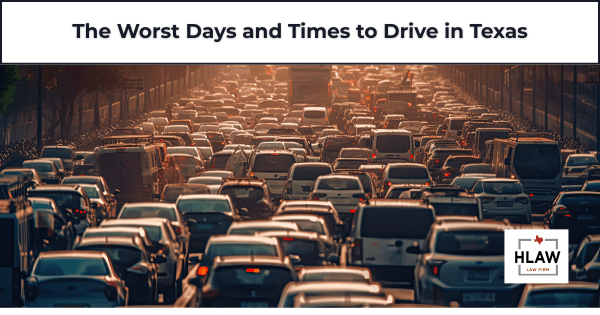

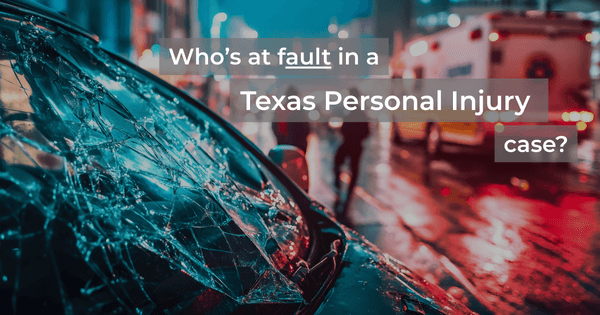
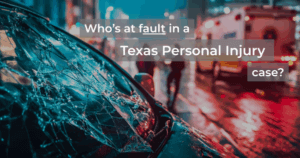
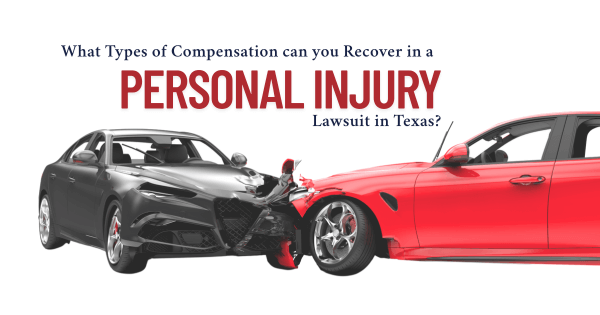

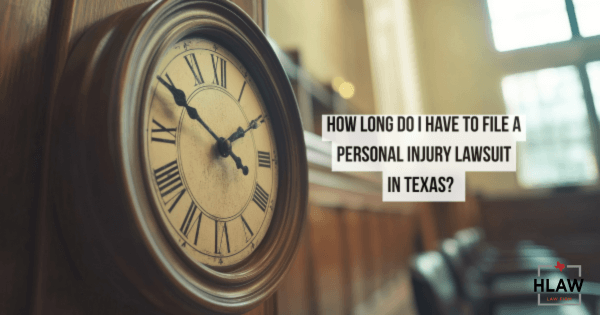
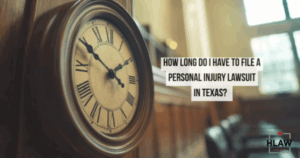
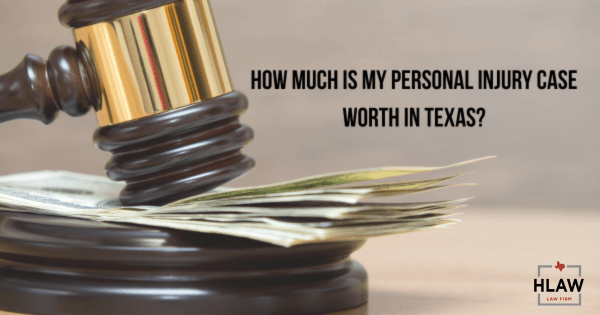
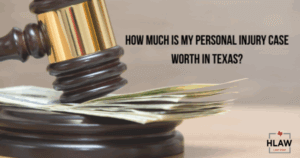
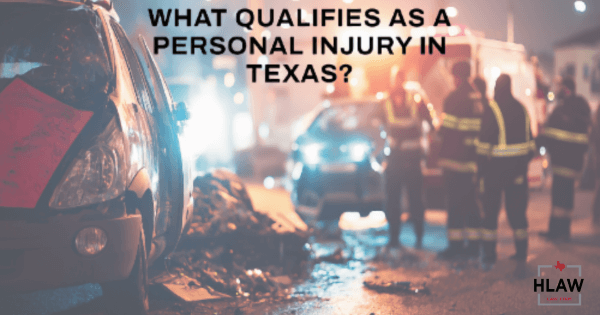
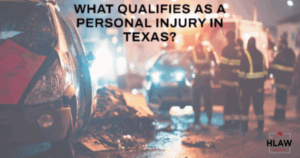
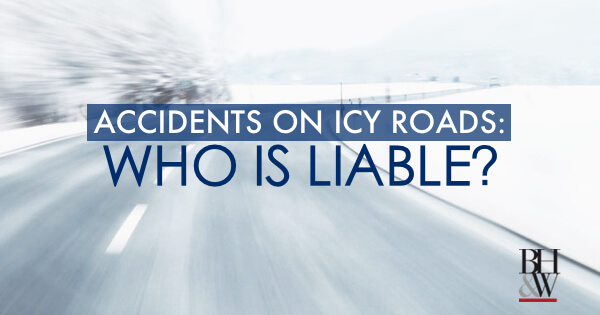
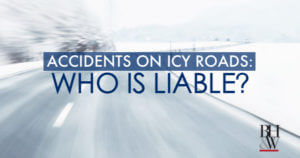
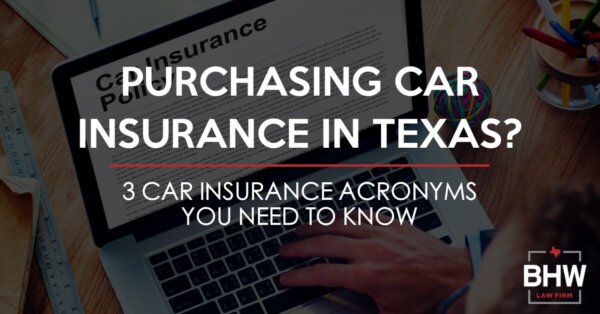
 Car insurance premiums, like everything else these days, have reached historic highs. You get your renewal notice in the mail and gasp at the increase. So, you make the call to your insurance agent to see what can be done to save you money.
Car insurance premiums, like everything else these days, have reached historic highs. You get your renewal notice in the mail and gasp at the increase. So, you make the call to your insurance agent to see what can be done to save you money.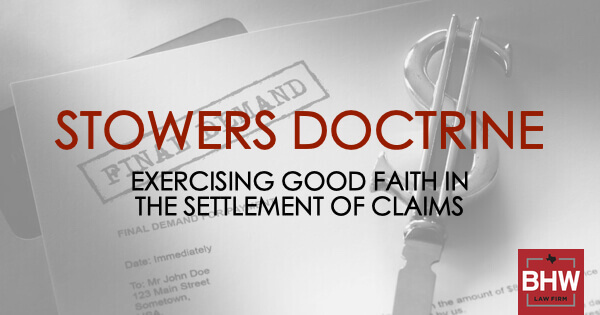
 Under the typical Texas liability insurance policy both the insurer and the insured have mutual obligations and rights. The insured pays a premium to their insurance company to protect against unexpected losses and claims. On the other hand, the insurance company has a duty to defend against claims covered under the policy and a right to control the defense of litigation should it arise.
Under the typical Texas liability insurance policy both the insurer and the insured have mutual obligations and rights. The insured pays a premium to their insurance company to protect against unexpected losses and claims. On the other hand, the insurance company has a duty to defend against claims covered under the policy and a right to control the defense of litigation should it arise.



